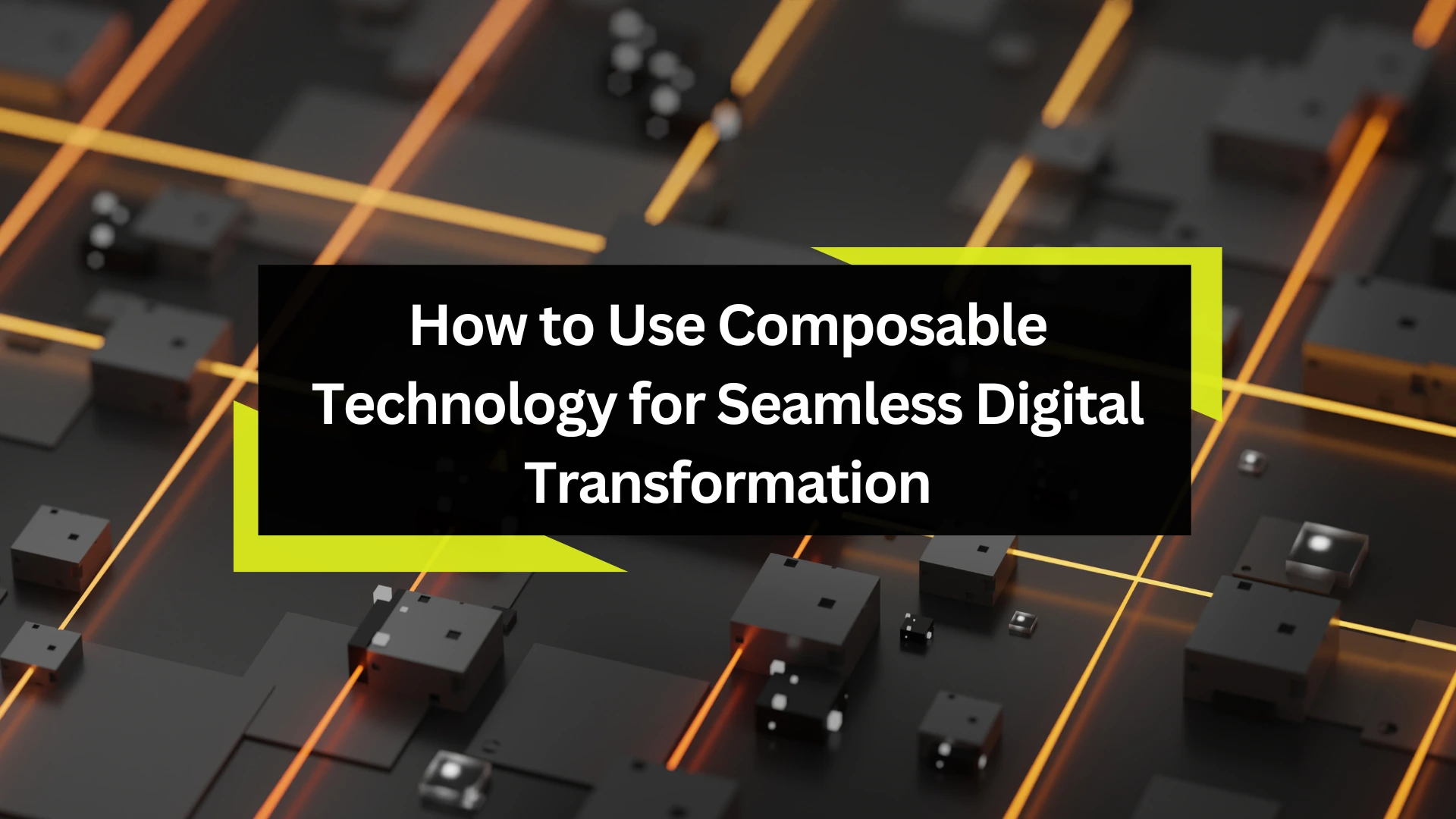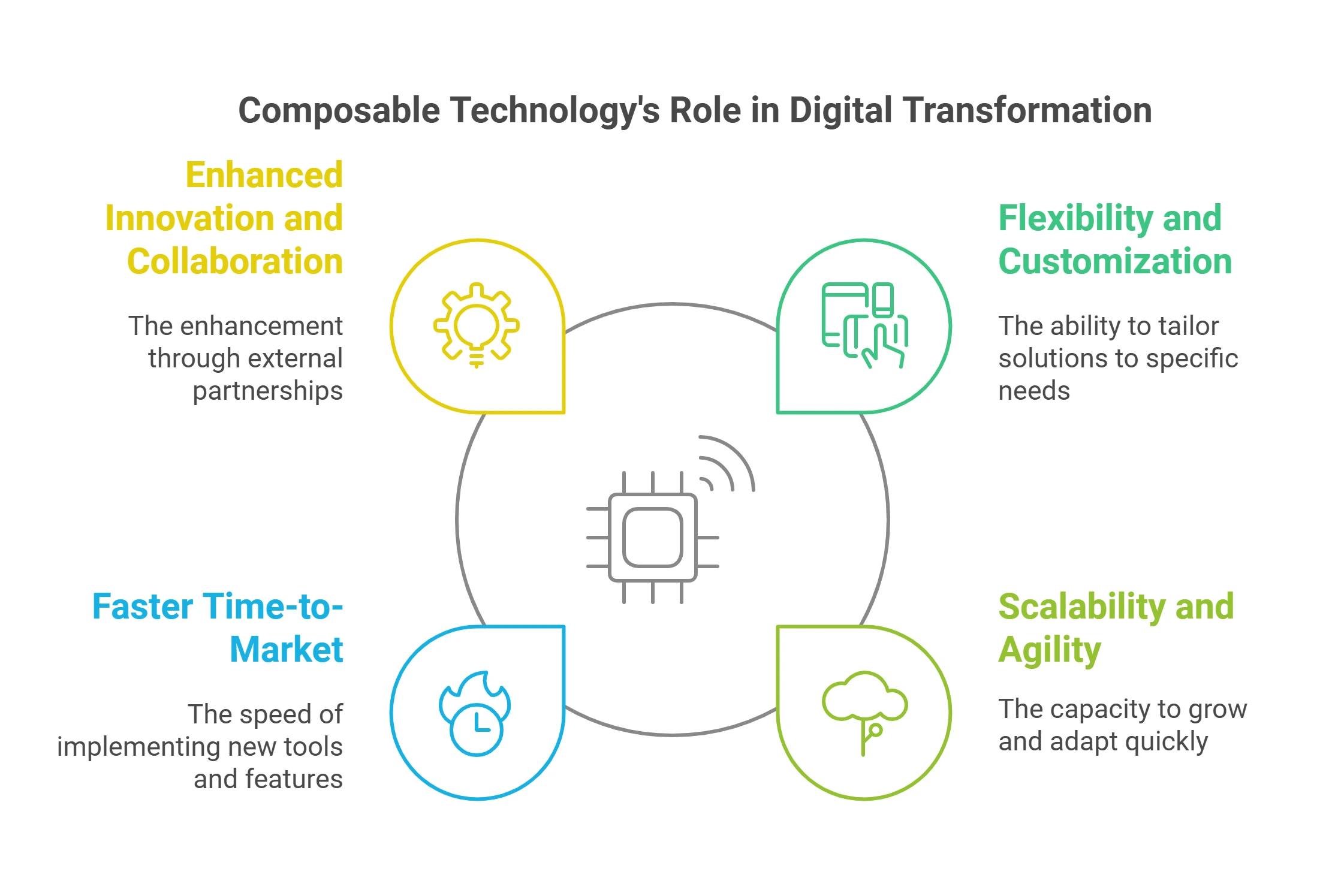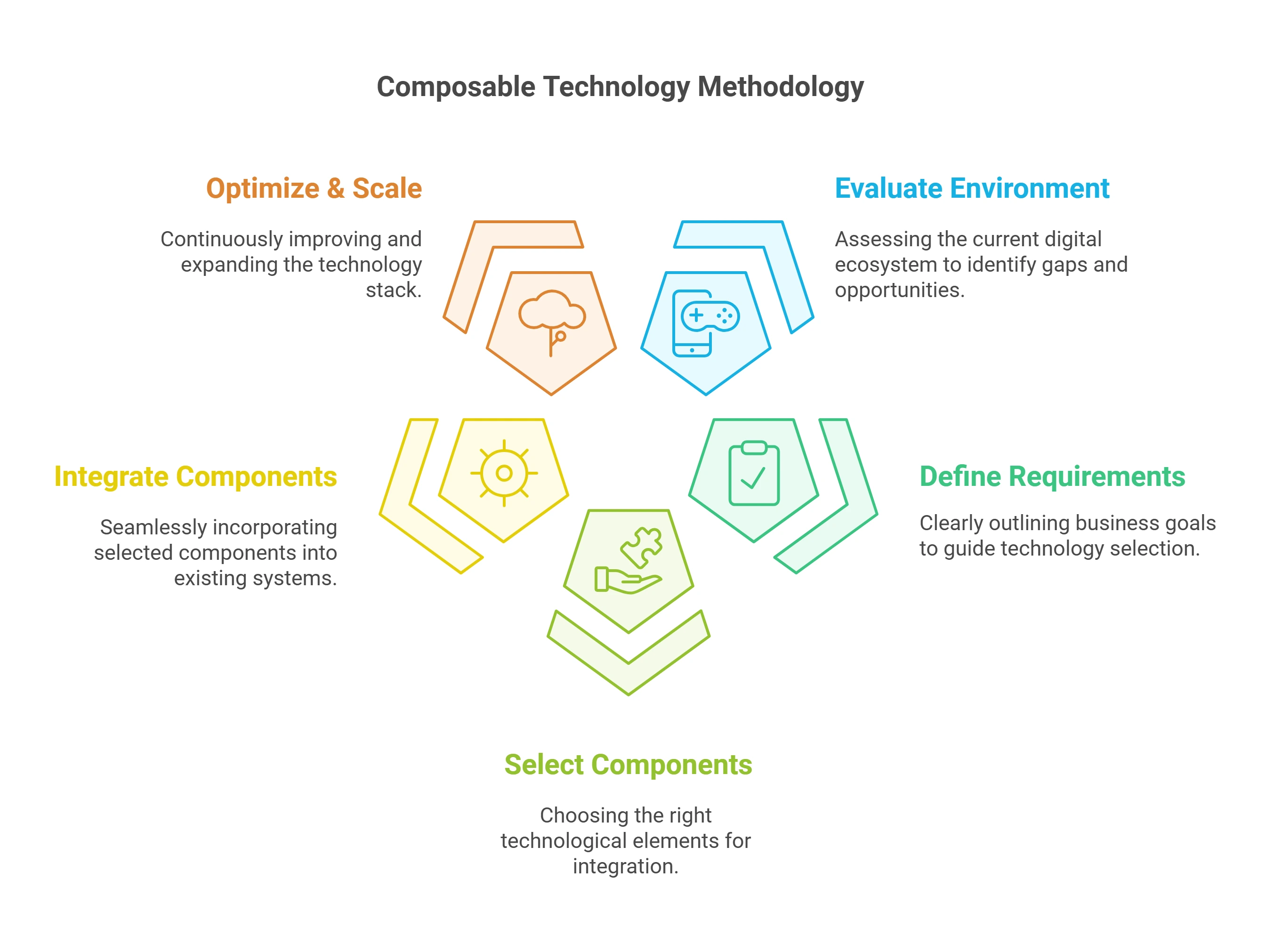
In the contemporary, swiftly changing business environment, organizations are always pursuing methods to optimize their operations, enhance efficiency, and maintain a competitive edge. Digital transformation has emerged as a pivotal factor in attaining these objectives. Many firms encounter difficulties in establishing conventional monolithic systems that are frequently rigid and expensive. Composable technology offers a flexible, scalable, and adaptable foundation that enables enterprises to expedite their digital transformation process.
This article will examine the utilization of composable technology for effective digital transformation and its significance as a transformative factor in the B2B technology landscape.
Composable technology is a methodology in digital architecture that enables enterprises to construct and integrate applications and solutions from a set of loosely connected, interoperable components. These elements, also known as "microservices," are autonomously generated, deployed, and scaled, enabling companies to choose and configure only the essential components that align with their particular requirements.
Composable technology allows businesses to select optimal tools and services rather than depending on a uniform solution, providing flexibility, agility, and the capacity to swiftly adjust to evolving business needs.

Digital transformation encompasses more than just technology; it involves re-evaluating a company's operational methods and the value it provides to its consumers. Composable technology is important in this change, allowing firms to develop customized solutions that address their specific requirements. Composable technology enables digital transformation in the following manner:

To effectively utilize composable technology for digital transformation, enterprises should adopt a systematic methodology. The following are the essential steps to commence:
Prior to deploying composable technology, it is crucial to comprehend your existing digital ecosystem. Evaluate your current systems, pinpoint deficiencies, and determine where composable technology might deliver optimal benefits. Evaluate elements including integration requirements, scalability, user experience, and customer expectations.
Explicitly delineate your business aims and objectives to ascertain which elements will most effectively fulfill your requirements. Are you seeking to improve consumer engagement via a more tailored experience? Do you require a more sophisticated data analytics system to enhance decision-making? Establishing these criteria will assist you in selecting the appropriate components for your composable technological stack.
Composable technology offers a wide selection of components, such as microservices, cloud platforms, APIs, and pre-constructed solutions. Among the most often utilized composable components are:
Choosing the appropriate combination of components is essential for ensuring seamless integration and attaining your intended results.
After selecting the components, it is time to incorporate them into your existing infrastructure. Given that composable technology emphasizes modular and interchangeable components, this phase should be rather uncomplicated. Nonetheless, integration may necessitate technical proficiency to guarantee seamless communication between systems.
Moreover, numerous composable components provide considerable customization capabilities. You can customize the appearance, experience, and functionality of the tools to conform to your business processes and branding.
Digital transformation constitutes a continuous process. Subsequent to the implementation of your composable technology stack, persistently assess its performance and optimize as necessary. Seek chances to enhance certain components, integrate new functionalities, or improve user experiences in response to feedback and changing business requirements.
Composable solutions provide intrinsic flexibility, allowing for seamless adjustments and expansions of your digital environment without interfering with existing systems. This guarantees that your digital transformation trajectory is consistent with corporate expansion and market dynamics.
Digital transformation is not a singular initiative; it is a sustained strategy. Foster a culture of perpetual enhancement, utilizing feedback from employees, customers, and stakeholders to propel innovation and refinement. Consistently assess the efficacy of your composable technology solutions and implement modifications as necessary to sustain a competitive advantage.
Although composable technology provides significant advantages, its deployment necessitates meticulous design and execution. Presented below are few optimal techniques to contemplate:
| Component Type | Key Benefits | Use Cases |
|---|---|---|
| Content Management Systems (CMS) | Centralized content control, omnichannel delivery | Website management, digital marketing, content distribution |
| Customer Relationship Management (CRM) | 360° customer view, sales automation | Lead management, customer service, marketing campaigns |
| Enterprise Resource Planning (ERP) | Process integration, data centralization | Financial management, HR operations, supply chain optimization |
| E-Commerce Platforms | Transaction management, customer engagement | Online sales, product management, payment processing |
| Data Analytics | Business intelligence, predictive insights | Customer behavior analysis, market research, performance tracking |
"Composable technology represents a paradigm shift in how businesses approach digital transformation. Rather than committing to monolithic systems, organizations can now build their digital ecosystem piece by piece, ensuring each component serves a specific purpose and contributes to the overall business strategy."
Composable technology is transforming the manner in which enterprises undertake digital transformation. Composable technology helps enterprises to develop flexible, scalable, and tailored solutions, enabling them to remain competitive, adapt rapidly, and address evolving client expectations.
By adhering to the aforementioned processes and using best practices, enterprises may leverage composable technology to facilitate a cohesive digital transition that corresponds with their distinct objectives, enhances operational efficiency, and propels growth. Utilizing the appropriate strategy, composable technology can be important in realizing the complete potential of your digital ecosystem.
What is composable technology?
Composable technology is an approach to digital architecture that allows businesses to build and integrate applications from loosely coupled, interoperable components that can be independently developed, deployed, and scaled.
How does composable technology differ from traditional monolithic systems?
Unlike monolithic systems that are rigid and tightly integrated, composable technology offers flexibility through modular components that can be selected, configured, and replaced independently without disrupting the entire system.
What are the key benefits of using composable technology for digital transformation?
The key benefits include enhanced flexibility and customization, improved scalability and agility, faster time-to-market, and increased innovation and collaboration opportunities.
What types of businesses can benefit from composable technology?
Organizations of all sizes across various industries can benefit from composable technology, particularly those looking to adapt quickly to market changes, scale efficiently, or deliver personalized customer experiences.
How can I start implementing composable technology in my organization?
Begin by evaluating your existing digital environment, defining clear business requirements, selecting appropriate components, integrating and customizing those components, and then continually optimizing and scaling your solution.
Your email address will not be published. Required fields are marked *
Loading questions...
